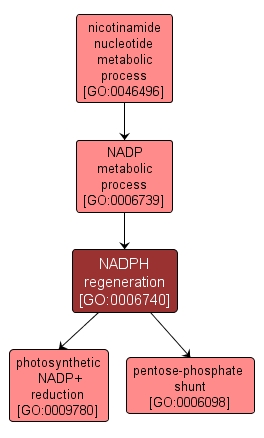GO TERM SUMMARY
|
| Name: |
NADPH regeneration |
| Acc: |
GO:0006740 |
| Aspect: |
Biological Process |
| Desc: |
A metabolic process by which a pool of NADPH generated by the reduction of NADP+. |
Synonyms:
- reduced NADP regeneration
- reduced nicotinamide adenine dinucleotide phosphate regeneration
- NADP (reduced) regeneration
|
|

|
INTERACTIVE GO GRAPH
|














